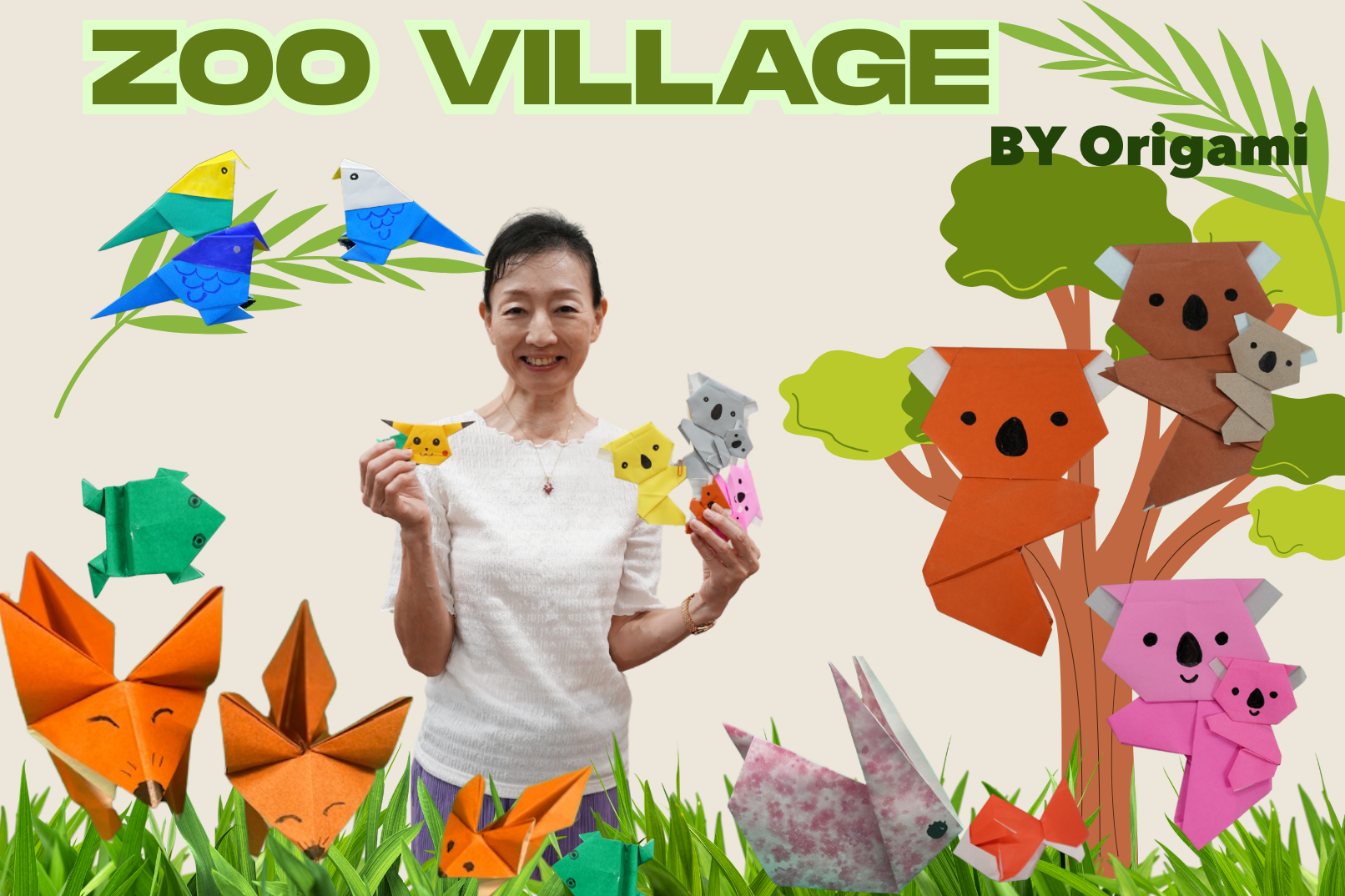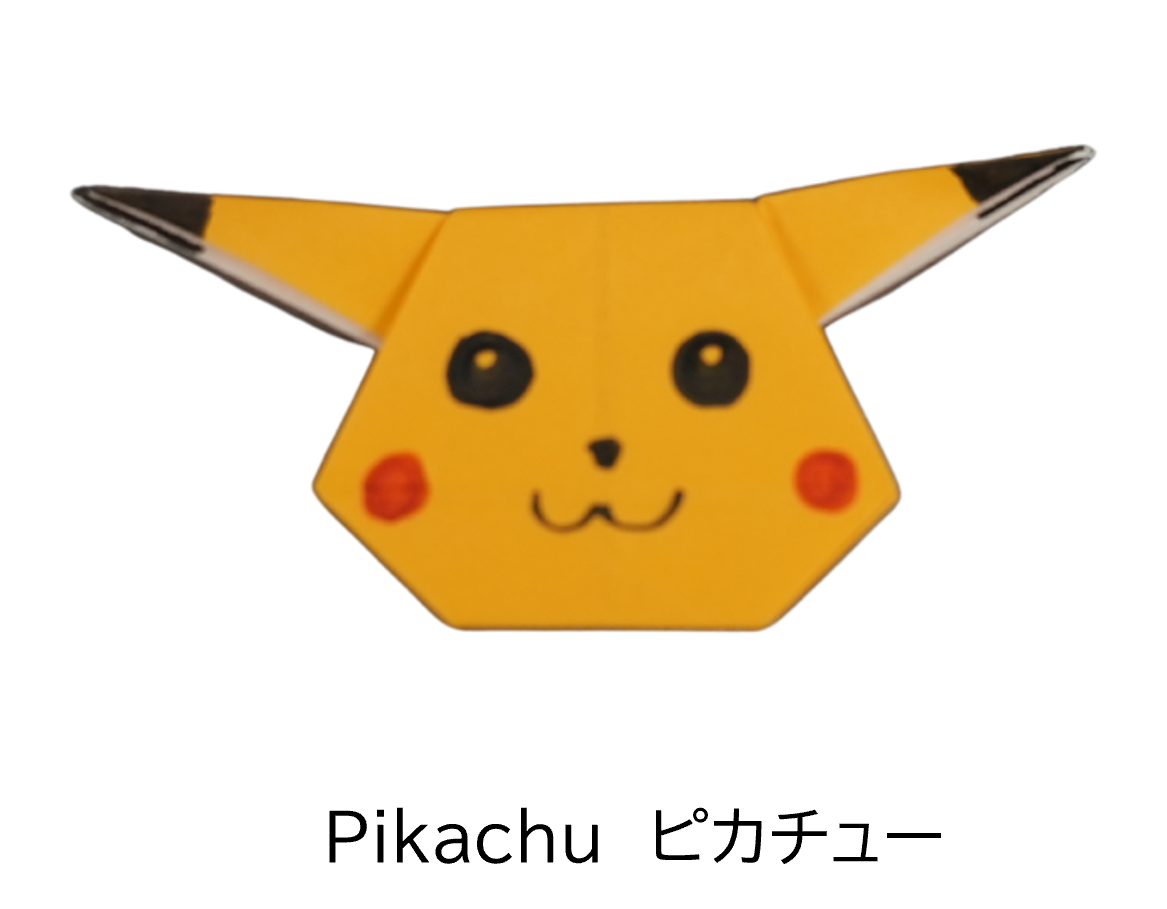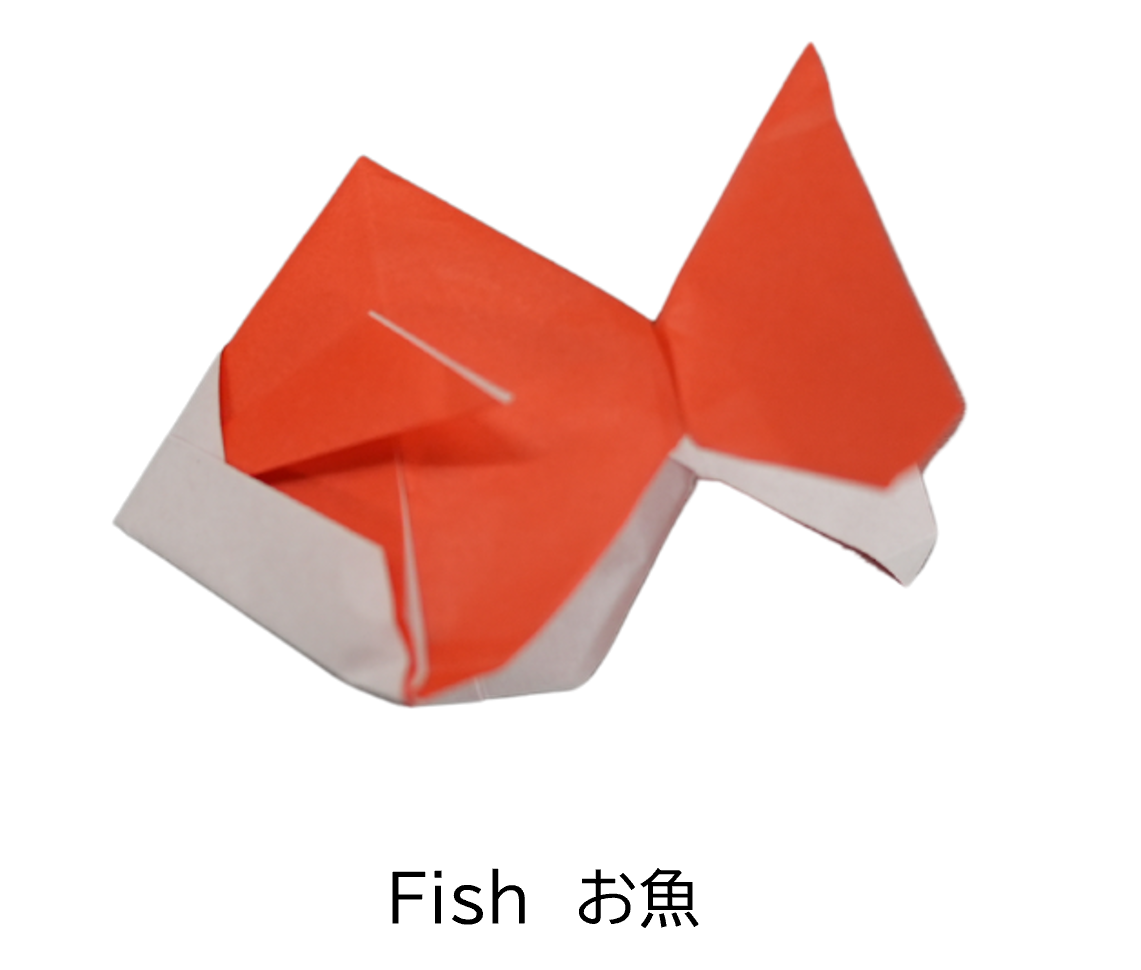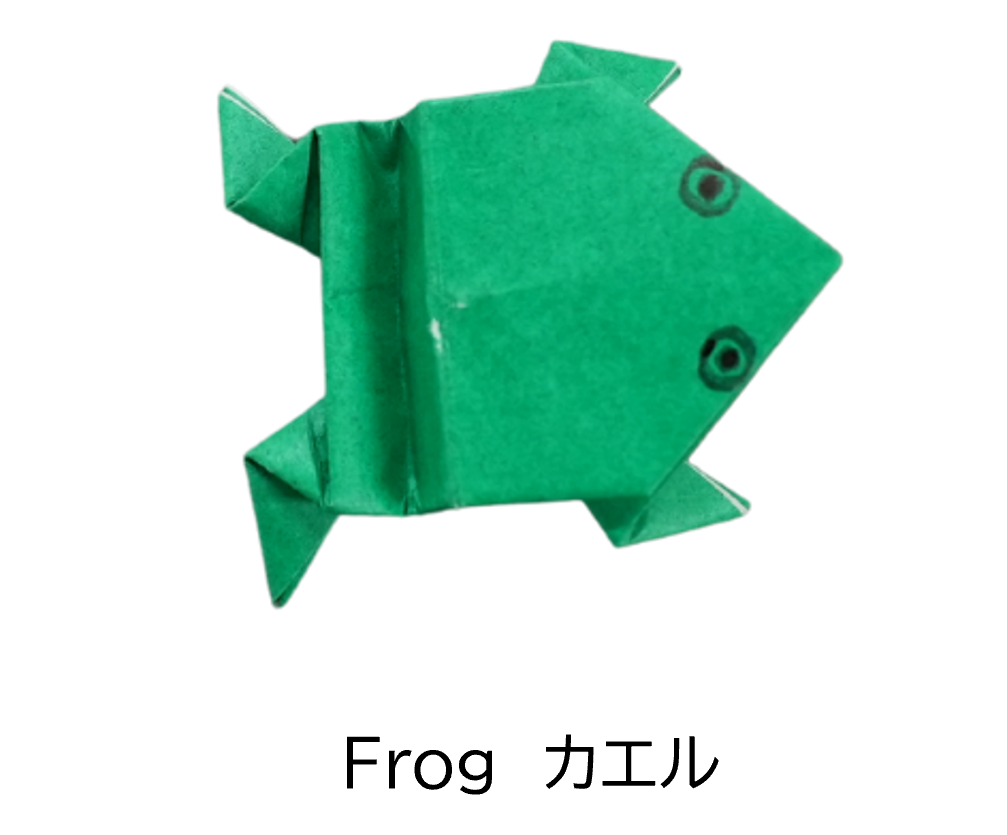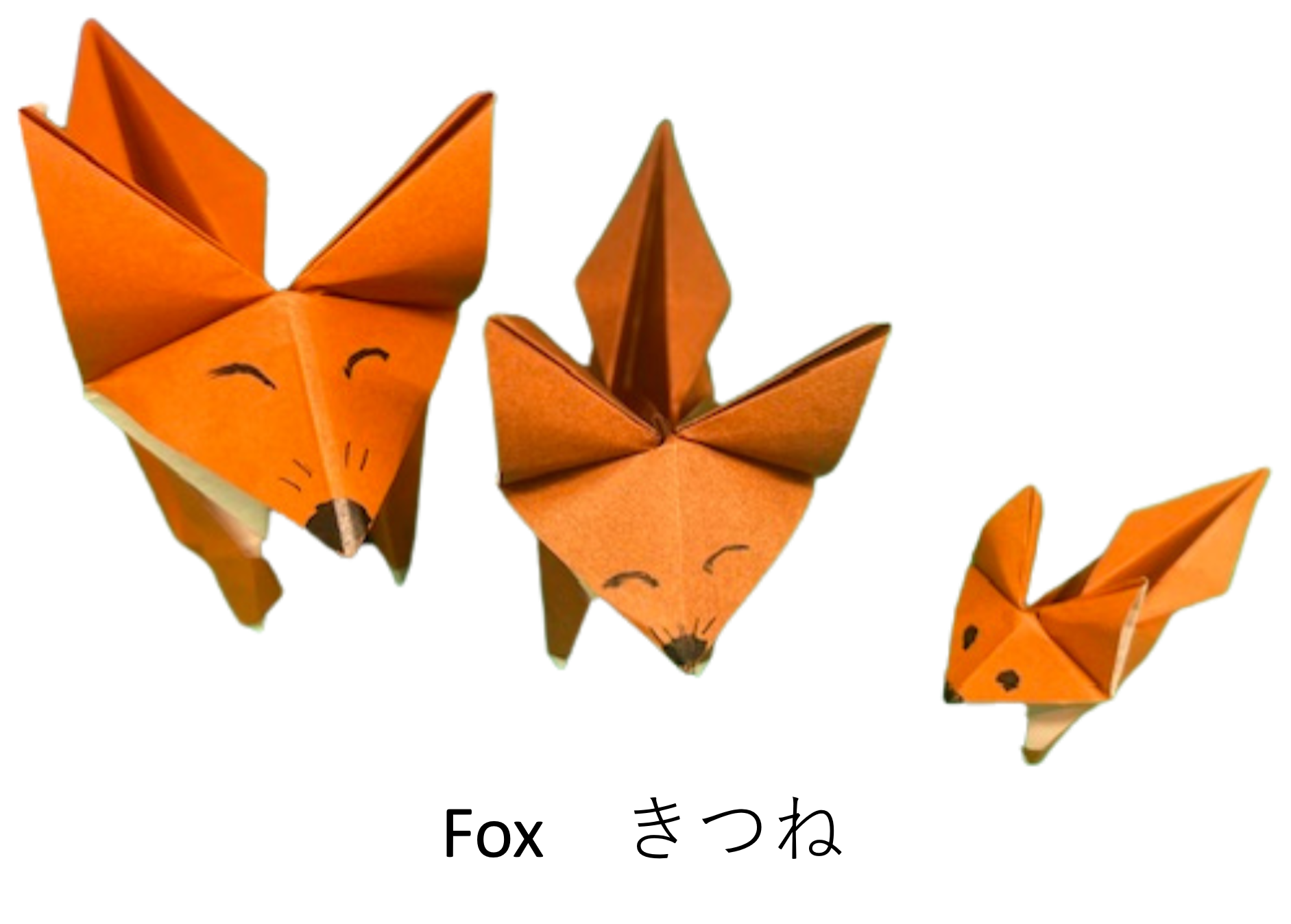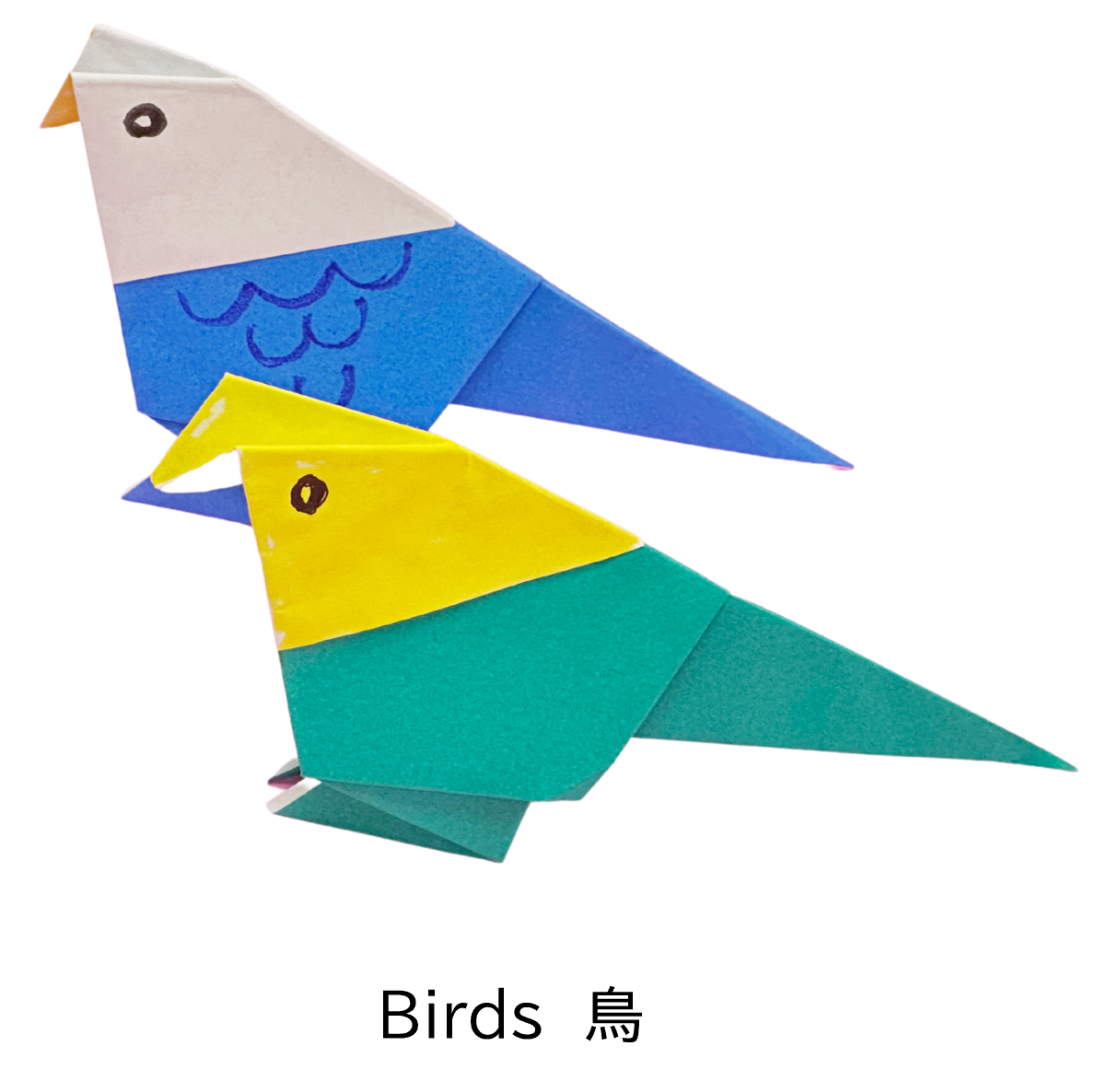Zoo Village by Origami Folding
PC009ZZ25
Origami is a traditional Japanese art and cultural practice in which square sheets of paper, often decorated with beautiful colors and patterns, are folded to create a wide variety of shapes—such as animals, plants, seasonal motifs, and everyday objects.
Traditionally, no tools are used—just the hands and paper. Some pieces, especially those made with washi (Japanese paper), are so intricate and refined that they are considered works of art.
Origami can be created with almost any kind of paper, making it both accessible and environmentally friendly. It also serves as a unique form of communication that transcends language barriers.
While honoring traditional techniques, we also introduce modern and innovative approaches to origami.
HIGHLIGHT
Choose your favorite animal from six options and bring it to life with origami!
The final look will change depending on the paper and size you pick.
You’ll learn not only how to fold, but also how to enjoy origami in new and playful ways.
Meet the Animals of the Village !
1 : Koala
The most popular animal in the Village! This adorable mother-and-baby pair is especially charming. It’s even cuter when holding onto a tiny branch made from chopsticks.
2 : Pikachu
A close second in popularity after the koala. If you can fold a traditional crane, you’re ready to try this advanced design.
3 : Frog
This frog hides in the Village's water areas. Give its back a push and watch it leap! A favorite among boys for its playful movement.
4 : Rabbit
A simple yet beloved character that everyone adores.
5 : Fish
You can create goldfish or tropical fish. Thread a string through it and watch it "swim" joyfully!
6 : Fox
A more advanced design that’s slightly tricky to fold. The fox often appears in stories about rice fields or buckwheat, making it a meaningful and traditional figure.
WHAT YOU CAN EXPECT
The koala is so adorable, it almost looks alive!
You can also create a variety of other animals—like Pikachu, loved around the world; goldfish to decorate; frogs you can play with; rabbits, symbols of good fortune; and foxes, which are traditionally worshipped in Japan.
Feel free to fold many different animals, or personalize your favorite one by choosing unique colors and patterns.
Let your creativity guide you as you build your own delightful world of origami animals.
More info
About Origami
Initially, Japanese washi was highly valued and used for Shinto rituals, such as wrapping offerings to the gods or for ceremonial folding.
Chiyogami, which featured beautiful patterns, was a highly prized item among the court nobility in Kyoto.
Later, with the spread of woodblock printing, many chiyogami were produced and became available to the general public.
Origami, a form of etiquette used in ceremonies and celebrations, gradually emerged as a technique of folding paper to create various shapes.
Origami patterns include all kinds of motifs, such as plants, animals, congratulatory designs, ukiyo-e and kabuki art, as well as popular patterns from that era.
One sheet of paper can be folded into hundreds of different creations, many of which contain the wisdom and sensitivity of the Japanese people. Folding origami together at home with parents and children is also cherished as a cultural practice that strengthens family bonds.
In modern times, washi paper's strong fibers are used in fashion, and the technique of folding origami into small pieces is attracting attention in many fields, including space development, artificial satellites, and artificial blood vessels in medicine. This technique is also being used overseas.
Itinerary
CANCELLATION POLICY
In the event of cancellation, the following fees will apply:
(1) 3-14 days prior to the program: 20% of the program fee
(2) 2 days prior to the program: 50% of the program fee
(3) One day before the program or on the day*: 100% of the program fee
*In the case of a no show, a separate remittance fee will be charged.
There are no reviews yet. Be the first one to write one.
PROGRAM FEE(Excl. consumption tax)
- Fee per Person
- 10,800JPY
- STARTING TIME
-
(1) 9:00~
(2) 10:30~
(3) 13:00~
- DURATION
- 90 mins
- LOCATION
-
Senshinan (B208) in the Kikai Shinko Kaikan Honkan building (2 minutes north of Tokyo Tower)
- MINIMUM NUMBER OF PARTICIPANTS
- 2 people
- INCLUSIONS
- *Origami instruction in English, with cultural explanations
*Origami paper and materials included
*Printed instructional guides (textbooks) provided
- EXCLUSIONS
- Venue and/or travel fees for events outside of the Grand TJT facility.
- NOTIFICATIONS
- ◆ This is a shared program. Multiple groups may take this program at once.
◆ Please follow the instructions of the guide during the program. We will not be responsible for any accidents that may occur due to disobedience of the guide's instructions.
◆ The program duration stated is only an approximate. Please note that the duration of the experience may vary depending on situation and number of guests.
◆ For the cultural experience programs, you are required to meet our guide at a designated meeting place. If you are late, please contact us at 03-6432-0195 during business hours (from 8:00 to 17:00 on weekdays,from 8:00 to 10:00 on Saturdays). We may also provide you with an additional telephone number to contact in advance of the program.
Please note: The main entrance to our facility is locked on Saturday afternoons, Sundays, and national holidays. If you attend an experience on one of these days, please wait in front of the lobby and a staff member will come to meet you
◆ If you require special assistance during the program due to any of the following: religious reasons, physical conditions, illness, allergies, or age of children, please be sure to indicate this in the remarks section of the reservation form at time of application. Please note that we cannot guarantee any arrangements or changes to the program without prior inquiry.
* The minimum number of participants for our cultural experience programs is 2, with the exception of the kimono experience, which can be attended as a single participant (1+ participants).
* This program is typically held in English. However, languages other than English can also be supported. Please inquire at info@truejapantours.com for details.
* Our business hours arefrom 8:00 to 17:00 on weekdays,from 8:00 to 10:00 on Saturdays. Please note that inquiries received outside of business hours will be handled on the next business day. The application deadline for this program is 10:00a.m. (Japan Standard Time) five business days prior to the tour date. If you wish to apply after the deadline, please contact us at info@truejapantours.com.
* Please note that we cannot guarantee arrangements for programs purchased after the application deadline without prior inquiry.
Stocker
BOOKMARKS
- Not available.


